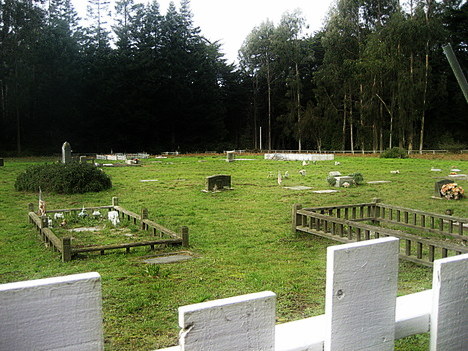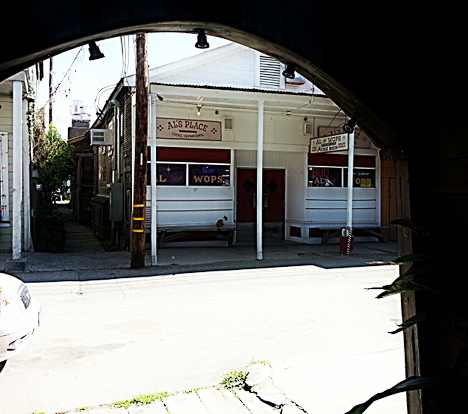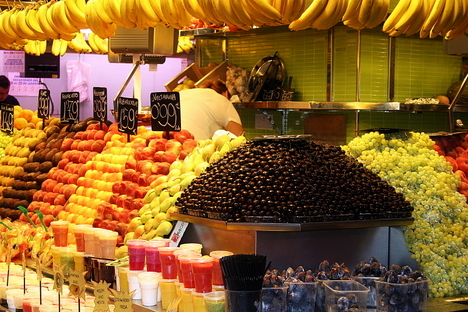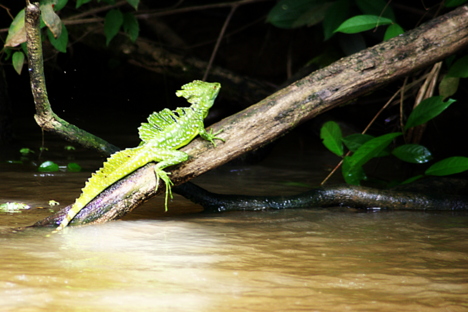Discover Northern California's
#TravelTuesday #Photo-of-the-Week
Continued #3
What is
#TravelTuesday #Photo-of-the-Week?
When we first started blogging our #TravelTuesday photo series back in January of 2013 at Discover Northern California's Travel Blog, it didn't occur to us that those items - like all the others on that page - would eventually drop off the bottom of the viewable page.
When it did occur to us, we realized we needed to collect them somewhere, so those who weren't around when they originally posted could find them. So here we are!
In case you're wondering, #TravelTuesday is a Twitter phenomenon created by Katy Lynch of Where I've Been,
the popular social media app used by over 9 million people on Facebook,
MySpace, bebo, etc. to share the places they've been to, lived in,
and/or want to go to.
And, of course, Photo-of-the-Week (or -Day or -Month) is a favorite publishing tool throughout the Internet.
Do you have a favorite
NorCal story?
From a family visit from years ago to something
you discovered last weekend,
Share it with
the rest of us - we'd love to learn about it!
If you're looking for Northern California lodging, you can't do better than to compare prices with HotelsCombined.com before you book:

#TravelTuesday #Photo-of-the-Week
Who you gonna call?
Ghostbusters, of course!
We're guessing that has something to do with the home-made grave fences and cute little scenes we discovered in the Inglenook Cemetery just north of Fort Bragg in Mendocino County one Sunday drive.
The cemetery itself is surrounded with an obviously and lovingly cared for white picket fence, with a gated entry way, but the curious thing was the little fences and miniature dioramas scattered throughout the cemetery around individual graves - Lilliputian villages, diminutive American flags, pint-sized animals, plus the more familiar bouquets of flowers.
There was no one around to ask, so we concluded the purpose of these cultural charms was probably to mark and protect (from ghosts?) the final resting places of loved ones.
Whether you frequent cemeteries to find family ancestors, create tombstone rubbings, explore history, or visit your favorite spirits ... we've found that one of the most fascinating aspects is the differences in local customs that become apparent the more cemeteries you visit.
Rest in peace, my beloveds!
#TravelTuesday #Photo-of-the-Week
Visit Al the Wop's place for the best steak in town!
And no, we're not being politically incorrect - Al the Wop's is the name by which everyone knows Al's Place! We can prove it. It's painted right on the window and on the sign above the door!
Naturally, there's a great story behind the name. Originally, the building was constructed as a Chinese restaurant (about 1915) in the then-new Chinese community of Locke, the only town in the United States that was built by Chinese immigrants for themselves.
When Al Adami - Italian, as his name might suggest - arrived in Locke in 1934 and purchased the building to turn it into a steak place (serving New York steaks and next to nothing else), his restaurant became the only non-Chinese business establishment in the town. With a genial tip of his hat to his status as an outsider, Al called himself The Wop, and his place, Al the Wop's.
Al introduced a few other surprises when he opened up - there was no menu; Al asked you how you wanted your steak cooked. If someone came in to the restaurant wearing a necktie, he cut it off - too dressy for Al's! Al also liked to stir the ladies' drinks with his fingers, and throw dollar bills up to the ceiling and make them stick (a tradition which still survives today).
Another institution from the early days is the peanut butter and marmalade served up with every meal - legend has it that a friend brought in a jar of peanut butter and a jar of marmalade (or apricot jam, depending on who's telling the story) one day and asked Al for some toast to put 'em on. Al brought out the toasty Italian bread he served with his steaks and another tradition was born.
Al's gone now (he died in 1961), and he might not recognize the old place if he walked in today - what with the addition of a menu and the chicken and shrimp and burgers that have been added to it - but for most of us, it's still funky enough, fun enough, and yummy enough!
Ask the barkeep how the dollar bills get stuck to the ceiling
- it'll cost you a buck, but it's worth it!
For more photos of Locke, California, visit our Facebook Album
#TravelTuesday #Photo-of-the-Week
From Aceite de oliva (Olive oil) to Zanahorias (Carrots)
This photo-of-the-week is from our first (but hopefully not our last) trip to Spain and Barcelona.
Surrounded by enchanting Barcelona, with an entrance right off the fabulous La Rambla promenade, the Mercat Sant Josep/La Boqueria - known simply as La Boqueria to locals - occupies the historic site of markets that date back to 1217. The current structure was built in 1853.
It's difficult to adequately convey the intensity of the assault on your senses that you experience upon entering La Boqueria! You stroll, all unsuspecting, under the stained-glass arch with its coat-of-arms sign high above your head, into a world of raucous colors, pulsing sounds, and nostril-tweaking odors.
The place is abuzz with locals and tourists strolling, stopping, chatting, tasting, questioning, touching, and purchasing the multitudes of stall offerings - from live crabs and lobsters fresh from the sea, to tapas bars with small plates and Spanish sherries, to stacks of Crayola-hued fruits and vegetables, to hanging hams and sausages, to tinned olives and preserves, to offal venders, to wine merchants, fish mongers and poultry traders, to the beautiful flowers and spices.
It's a feast for the senses to be sure, but it's also a chance to experience that hard-to-achieve but wonderful-when-you-do perfect balance between a real locals' experience and a thriving tourist attraction all rolled into one.
If you get to Barcelona, don't miss La Boqueria!
Get the best possible price on your Barcelona hotel room at:

#TravelTuesday #Photo-of-the-Week
Lion Discovers New Hunt Strategy at Safari Park!
Our family has been visiting The San Diego Zoo Safari Park (previously called the San Diego Wild Animal Park) in Southern California for years. I remember when we first took our boys - way back in the year mumblemumble - thinking, "This is the closest I'll ever get to Africa!" At the time, it was more than enough.
And, even though we've since experienced the real deal, having been on safari in Kenya and South Africa, we still love to pack up our kidlettess and grandkidlettes for another adventure at the Safari Park.
Over the years, we've watched the lion exhibit morph from a large, fenced-in, grass and brush enclosure where you'd be hard-pressed to find a lion because they were so well hidden.
Nowadays the lions are housed in a visitor-friendly Lion Camp that "looks like a bit of African habitat, so guests get to see lots of natural lion behaviors, watching the cats as they romp in the grass, explore the logs and rocks, or sit and watch the antelope, giraffes, and rhinos in the nearby African Plains field enclosure."
During our most recent visit, we found this guy atop the resident safari vehicle, seemingly content for the moment to survey his realm. But it looks to me like he's thinking, "Maybe those tasty Tommys won't recognize me from up here!"
Even the gazelles must take their place in the Circle of Life!
#TravelTuesday #Photo-of-the-Week
Jesus Lizard Walks on Water!
While looking for photos to use in an article about Costa Rica that
I'm working on for Examiner.com, I came across this little gem - a Jesus
Lizard, resting on a branch in Tortuguero National Park.
And,
while we did actually see Jesus Lizards walk on water - more than once, I
might add - we weren't quick enough to get a good photo. But hey -
we're amateurs here! ;D
Common to southern Mexico, Central
America, and northern South America, these lizards are known for their
ability to run across the surface of bodies of water - usually standing
up on their hind legs - for c
considerable distances thanks to the little flaps between their toes that distribute their weight and create a pocket of air.
They really launch themselves along pretty quickly!
"I am the lizard king. I can do anything! ~
Jim Morrison
Please continue your exploration of what Northern California has to offer by using the Nav Bars in the left and right columns or by using the links at the bottom of the page.
Return to #Photo-of-the-Week from
#Photo-of-the-Week More Photos #3
For more of our #Photos-of-the-Week, follow these links:
Like what you're finding here at Discovering Northern California? Then please share with the Social Network of your choice.
And thanks for coming!
Related Pages
About this Website
About Us
Advertise at DNC
Advertising Policy
Build Your Own Website
Contact Us
Privacy Policy
Site Map for DNC
Visitor Survey
Related Pages
Hints & Tips
Beach Safety Tips
Best Kept Travel Secrets
Family Camping Tips
iPhone Travel Apps
Nude Beaches
Tide Pool Tips
Travel Sites We Love
Travel Tips
Whale Watching Tips
Wine Tasting Tips
Winter Driving Tips
Related Pages
Things To Do
Activity Village
Attractions
Beaches
Beer Lovers Delight
Burney Falls
Camping
Casa de Fruta
Day Trips
Gold Panning
Gold Rush Sites
Healdsburg
Historic Grass Valley
Lake Shasta Caverns
Lodi
Missions
Nevada City
RV Destinations
Ski Resorts
Tide Pool Tips
Travel Tips
Weekend Trips
Whale Watching
Wine Tasting
Related Pages
Free Things To Do
Free in Big Sur
Free in Chico
Free in San Francisco
Free in Sonoma
Related Pages
Insider Secrets
Best Kept Travel Secrets
Best Winter Whitewater
Boring Road? Nope
CA Admission Day
Climbing at Castle Rock
Crabbing Spots
Dream of Dreams
Fall in Eastern Sierras
Ghost Stories
Glass Beach
Great Stays, Low Pays
How to be a Valley Girl
Jade Beach
Lake Shasta Caverns
Lassen Volcanic SP
Lost Coast
Mono Lake
Moss Landing: Whales
New Clairvaux Abbey
Panning for Gold
Pygmy Forest
Mendo to Eureka
RV Destinations
SF Great Places to Eat
SF: More About Eating
SF Neighborhoods
SF Giants Baseball
Santa Cruz: Memories
Santa Cruz: Old Friends
Sonoma Cooking Class
Sonoma History
Sonoma Top Wine Stop
Tahoe: Discovery Trail
Underground Gardens
Yosemite: Family Hikes
Yosemite: High Country
YNP: Off the Beaten Path
Yosemite: Taft Point
Ziplines




